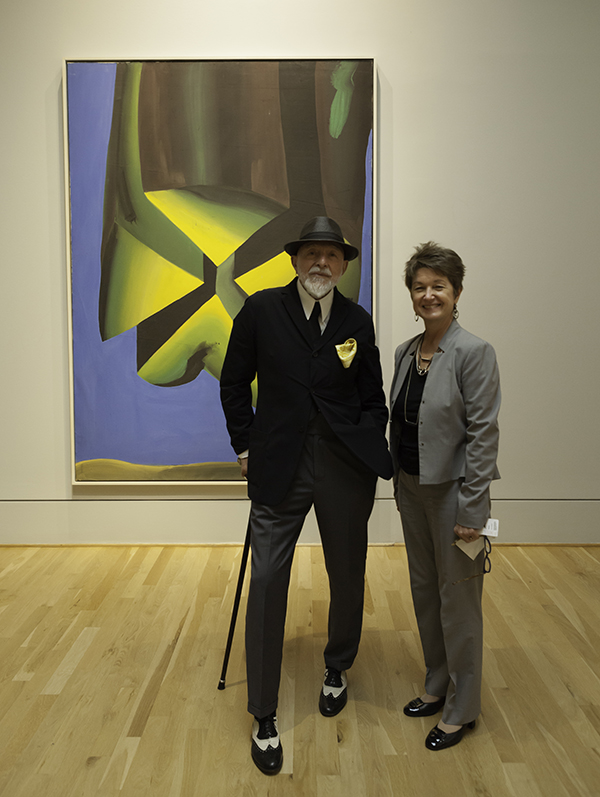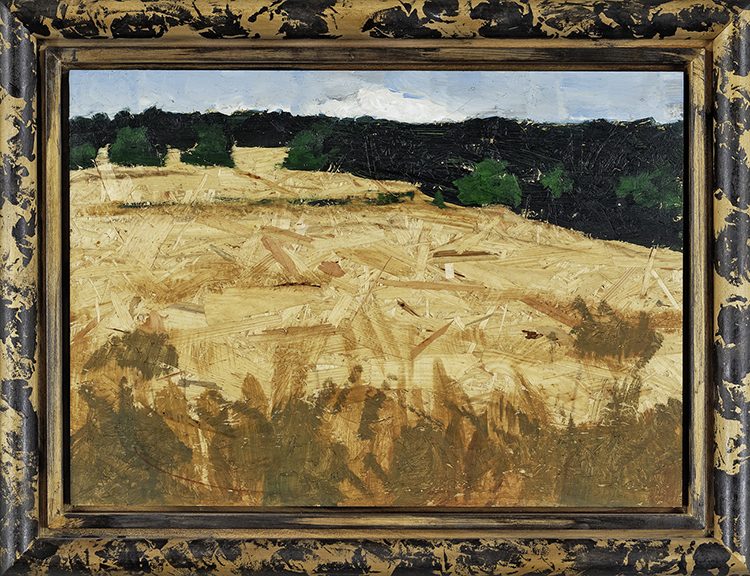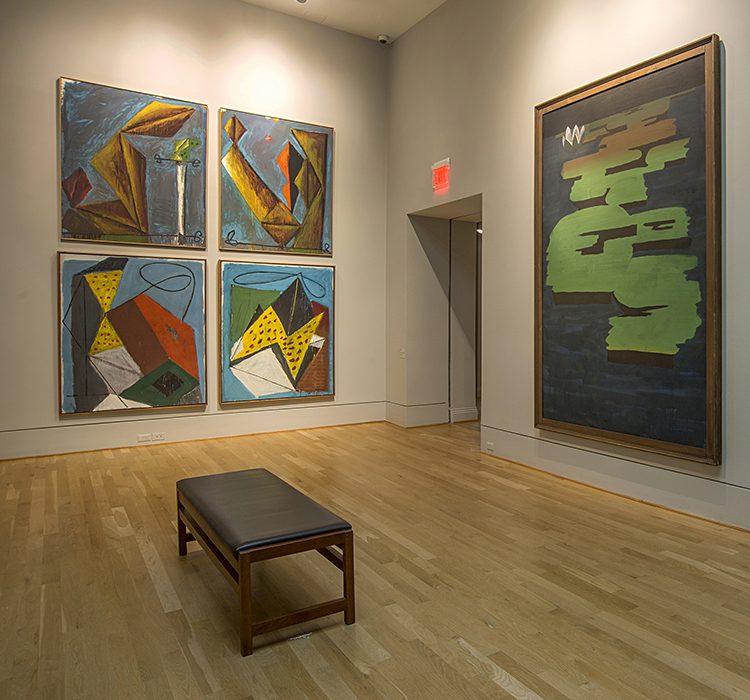
Markus Lüpertz with Phillips director and exhibition curator Dorothy Kosinski. Photo: Rhiannon Newman
We interviewed Phillips director and Markus Lüpertz exhibition curator Dorothy Kosinski about her recent time working with the artist to install the exhibition:
I’m excited to be able to share my recent experience with Markus Lüpertz as I worked with him to install the exhibition. It was a truly exhilarating experience to have the opportunity to get inside the artist’s head. It was fascinating to me, an art historian, who thinks in terms of progression and chronological orders, that none of that was important for Markus Lüpertz. In fact, to the contrary, he wandered through the gallery once, twice, three times, and changed the position of every object in the show. As he said to me, he was looking for an optical order. It had to do with robust juxtapositions of colors, of shapes, of small canvases and big canvases. So, contrary to most exhibits in the Phillips, or in most museums, the visitor, my dear, will be disappointed if you’re looking for the early works, the middle works, and the late works. Instead, you can go in any direction in this exhibit because he deliberately intermixes all of the works from those five decades of his very rich career.
So you might then ask, why? Is he trying to provoke us? Surely, but it is also an installation methodology that reflects his fundamental aesthetic philosophy. He and I were talking about this during his visit; his work is never about a style. A lot of people in the contemporary art world could say, “Aha! That’s a Kiefer,” or “Aha! That’s a Baselitz.” Their works are wonderful, he was quick to point out, but they’re very recognizable. As you walk through our galleries, you’ll see it’s not about a style, it’s not about consistency, it’s not about a kind of consistent progression. It’s surely teasing us, challenging us to think about, “what is this object?”
Lüpertz is trying to bring us forward, allow us a way of seeing our world. He said every time he paints a painting, he’s starting from the beginning, and by that he was talking about starting from the sort of infancy of his artistic practice, that every time he paints a painting it’s a voyage of discovery. He is never satisfied, he is returning again and again often to the same subjects, it’s a serious and eternal challenge that he grasps every time he takes paintbrush to canvas. I’m willing to bet that before the end of this exhibit, we get comments from our visitors about the lighting. “You forgot to light the canvases!” And I want to assure everyone that, again, this is the desire and direction of the artist himself. He moved those light canisters with his silver-tipped cane, trying to give us a sense of the quality of light that he desired. Not spotlighting the canvases but rather illuminating the wall around the canvases so that the canvas had a kind of even light, rather than a kind of artificial drama, and as you’ll see, the works in the show are filled with drama. They’re dramatic enough that we don’t have to try to stage them, and I think that that’s his point.
Dorothy Kosinski, Phillips Director and curator of Markus Lüpertz


